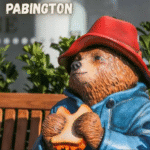Welcome to the vibrant world of Doujin Moe, a spectacular realm that embodies the spirit of indie manga culture in Japan. This unique phenomenon is not just about comics; it’s a movement fueled by passion, creativity, and self-expression. For fans and creators alike, doujinshi—self-published works created by artists—serves as an essential outlet for storytelling outside conventional publishing constraints. As we dive deeper into this captivating universe, you’ll discover how doujin moe shapes identities and influences mainstream trends while celebrating individuality in every stroke of ink. Get ready to explore the heart of independent manga culture!
The history of independent manga culture in Japan and its evolution into doujinshi
Independent manga culture in Japan has a rich history that dates back to the late 20th century. Artists began creating works outside traditional publishing houses, driven by passion and creativity. This movement blossomed in the 1970s, when self-publishing became more accessible.
The term “doujinshi” emerged as these creators started producing their own comic books. Initially, these were often parodies or fan works based on popular series. However, the scope quickly expanded beyond mere homage.
In the 1980s and 1990s, doujinshi evolved into a platform for original stories and diverse artistic expressions. Comic markets like Comiket provided venues for artists to showcase their work directly to fans. As digital tools advanced, so did opportunities for independent creators.
Today’s doujinshi reflects a wide array of genres—ranging from romance to horror—allowing voices that might be overlooked in mainstream media to flourish and find audiences.
Exploring the different genres and themes present in doujinshi works
Doujinshi presents an incredible variety of genres and themes, reflecting the creative spirit of indie artists. From romance to horror, fantasy to sci-fi, there’s something for everyone.
Many doujinshi delve into niche interests that mainstream manga often overlooks. This allows creators to explore unconventional narratives and characters in ways that resonate deeply with fans.
Romance remains a popular theme, often infused with real-life emotions and relatable scenarios. The exploration of LGBTQ+ relationships has also flourished within this space, providing visibility and representation.
On the other hand, some works embrace absurdity or parody. These playful takes on pop culture can be both hilarious and thought-provoking.
The beauty of doujinshi lies in its freedom—artists aren’t bound by commercial constraints. This results in experimental art styles and storytelling techniques that push boundaries beyond traditional publishing limits.
The impact of doujin moe on the mainstream manga industry
Doujin Moe has left a significant mark on the mainstream manga industry. Independent creators have pushed boundaries, experimenting with styles and narratives that often diverge from traditional storytelling.
This vibrant underground scene serves as a testing ground for new ideas. Many concepts born in doujinshi eventually find their way into professional works, reflecting evolving trends and reader preferences.
Additionally, popular series sometimes reference or draw inspiration from doujin content. This cross-pollination enriches the broader landscape of manga culture.
The rise of digital platforms also blurs the lines between amateur and professional work. Aspiring artists can now reach global audiences without gatekeepers dictating their success.
As more readers embrace these indie creations, mainstream publishers are compelled to adapt. The influence is undeniable; Doujin Moe not only celebrates creativity but also challenges established norms in an ever-evolving market.
The controversy surrounding doujinshi and copyright issues
Doujinshi occupies a gray area in the world of copyright. Many creators draw inspiration from existing manga, anime, and video games. This leads to a complex relationship between original content owners and indie artists.
On one hand, doujinshi is celebrated for its creativity. Artists reinterpret beloved characters and narratives, often adding fresh perspectives that resonate with fans.
However, this practice raises concerns among publishers who worry about intellectual property theft. Some creators feel disrespected when their work is used without permission or credit.
The reaction can vary widely. While some companies embrace doujin culture as free promotion, others aggressively enforce copyright laws to protect their franchises.
This ongoing tension sparks heated discussions within fan communities about artistic freedom versus legal boundaries in the realm of doujinshi creation.
How to support doujin artists and their work
Supporting doujin artists is both rewarding and essential for the growth of indie manga culture. One direct way to help is by purchasing their works. Many artists sell their creations at conventions or online platforms, making it easy to access unique content.
Engaging with them on social media can also make a difference. Liking, sharing, and commenting on their posts boosts visibility and encourages creativity. It creates a sense of community around their art.
Consider attending local comic events or doujinshi fairs. These gatherings offer opportunities to meet creators in person and experience their work firsthand.
Spreading awareness about your favorite doujin artists through word-of-mouth can significantly impact their reach. Recommendations from fans often lead new readers to discover hidden gems within the vast world of doujin moe.
Conclusion: Celebrating the unique and diverse world of dou
The world of doujin moe is a vibrant tapestry woven from the creativity and passion of independent artists. It serves as both a sanctuary for self-expression and a launching pad for future talents in the manga industry. As fans, we get to explore myriad genres that challenge conventional storytelling, offering fresh narratives that often resonate on deeper levels.
Supporting doujin artists not only helps sustain this thriving culture but also enriches our own experience as readers. By purchasing their works or attending conventions, we contribute to an ecosystem where diversity flourishes. Celebrating these unique voices allows us to appreciate the full spectrum of stories waiting to be told.
As you dive into the realm of doujinshi, remember that each piece reflects individual journeys and collective experiences within Japan’s indie scene. Embrace the uniqueness found in every page; it’s what makes doujin moe such an extraordinary aspect of manga culture today.






